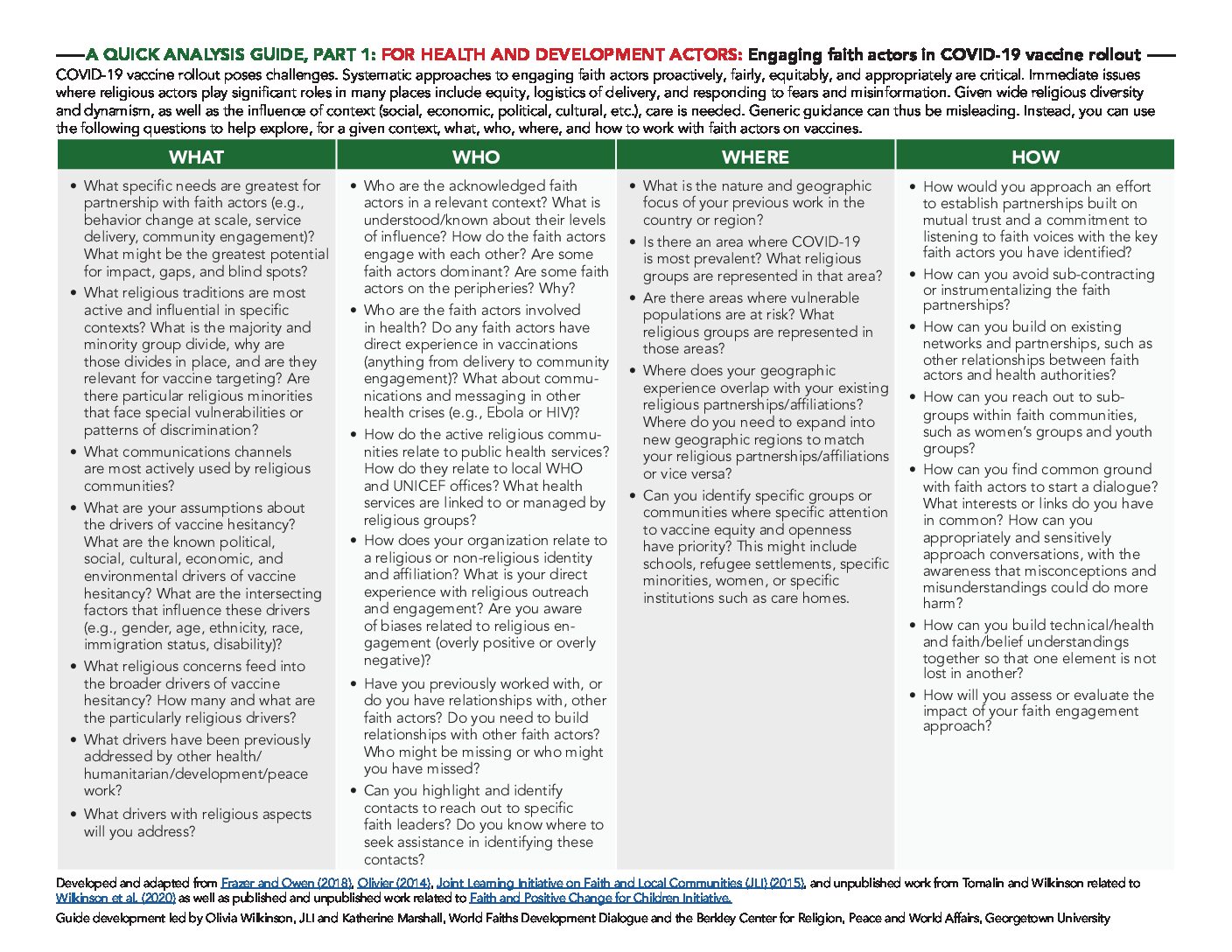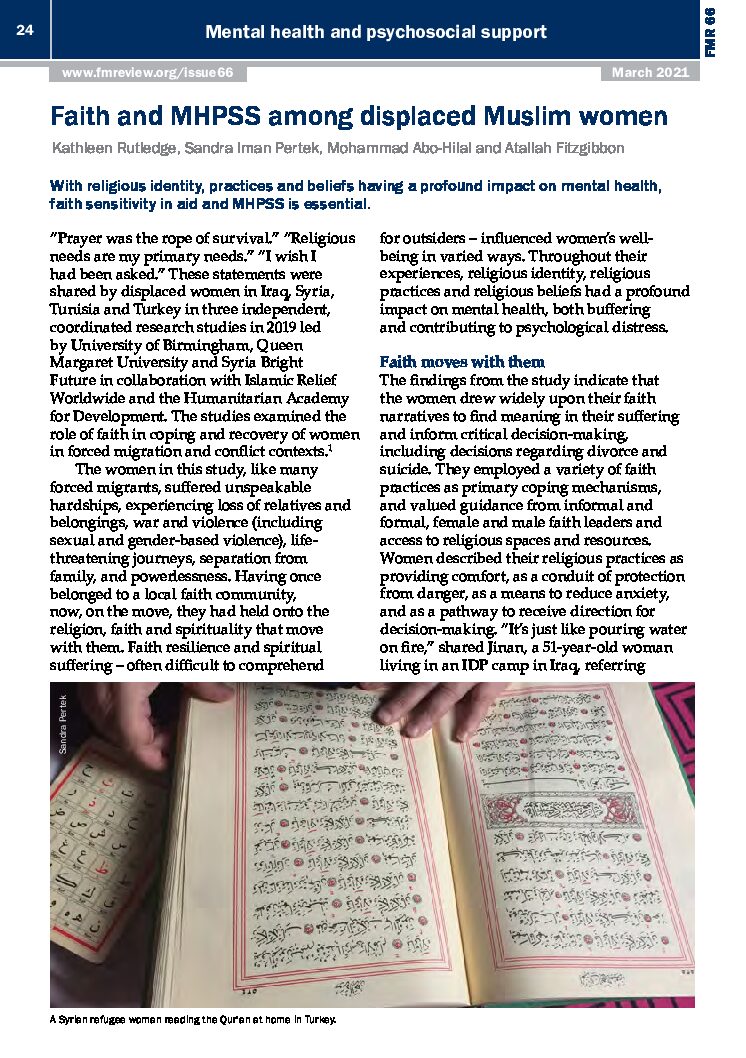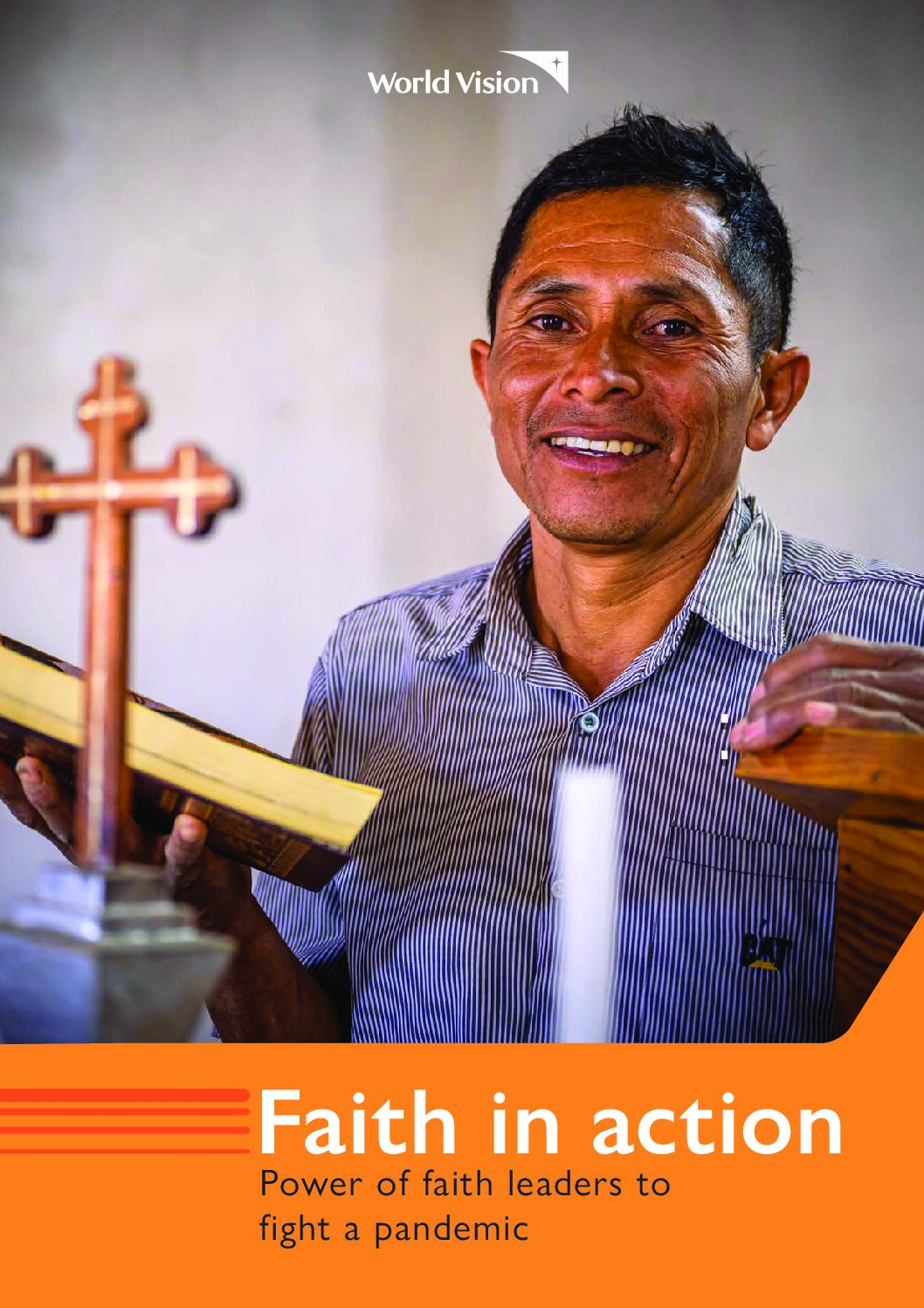How old is the religions and development evidence base? How did the evidence base start & how did it develop?
Religions and development is a growing field of research and inquiry. Most scholars agree that it started to properly form as a research field in the early 2000s. Although we recognize that religions have been involved in social development for millenia, the evidence base on religions and development is still relatively young (for a research field) at around 20 years old. In the late 90s and early 00s, scholars started to point out that religion was ignored in international development. International development, as a sector, had evolved with a largely secular mindset with reservations about religions. A well-known article by Ver Beek from 2000 proclaimed that spirituality was a “development taboo.” By the mid-2000s several research and practice projects had started and began to produce work, leading to other well-known publications such as the special issue of Development in Practice on religion and development and the work from Marshall and colleagues with the World Faiths Development Dialogue. In the last 10 years or so, the field has seen a more steady stream of interest and publications, much of which is summarized in our recommended reads section below.
For more information on the history and growth of the evidence base in religions and development, we recommend these articles:
- Religion and development: Tracing the trajectories of an evolving sub-discipline. 2019. Barbara Bompani.
- Impressions & Indications of Religious Engagement in Development. 2021. Katherine Marshall.
- Religion and development: The rise of a bibliography. 2016. Ignatius Swart and Elsabé Nell. This article also provides a fairly comprehensive reading list of religions and development articles from 1980-2015.
A notable aspect in the growth of religions and development is that “grey literature” (i.e., not academically published literature, but documents and reports published by organizations such as nonprofits) makes up a large portion of the evidence base. This is because much of the work in this area is conducted with and for development organizations that publish their own research reports. Paying careful attention to quality (Is it original research? Is the methodology properly explained? Does the acknowledgements section demonstrate that the report has been reviewed by others?), we can still count a lot of the grey literature as part of the evidence base. In fact, some of these reports have done more to introduce the religions and development evidence base to new people than many peer-reviewed journal articles. For example, the report “Keeping the Faith: The Role of Faith Leaders in the Ebola Response” helped cement the evidence on the role of faith leaders in the 2014-2015 Ebola response for many humanitarian and development policy makers and practitioners. You will find many examples of grey literature from nonprofits in the JLI’s Resources Library.
What do the terms “religions” and “development” really mean when referring to the religions and development evidence base?
We use the term religions to refer to all religious beliefs and practices that can form, influence, and hinder social transformation. “Religions” is used in plural because we are referring to multiple different types of religious beliefs and practices. We understand that religion is not a monolith, but religious beliefs and practices change over time and are embedded in their context. Frequently, people also interchangeably use the term “faith,” e.g., for faith-based organisations, faith communities, or faith leaders. The term faith is used more widely in the development sector, again as an umbrella term to refer to anything related to religions. It is not wrong to use the term “faith” but we refer to the religions and development evidence base because, in research and academia, religions and religious beliefs and practices are the more widely used and appropriate terminology.
We use the term “development” as shorthand for all of the socially oriented work that religions might undertake. In the language of international affairs, the evidence base spans more areas including humanitarianism and peace. More fully, we could call it the religions, humanitarianism, development, and peace evidence base, but that is a bit long winded to say every time! From the perspective of faith actors themselves, it might be more true to call it the “religions and community transformation” or “religions, social activities and justice” evidence base, because faith actors think about the work they do in more holistic ways than the silos of humanitarianism, development, and peace. Suffice to say, the religions and development evidence base spans many types of activity and topics of debate.
How can I navigate the religions and development evidence base?
Given the breadth of this field, it can often be useful to break it down even further and investigate specific topics. Religions are involved in every aspect of life and so there is most likely research on the roles of religions in your specific area of development work. For example, the gender, religions, and development evidence base is significant in its own right.
In JLI, we currently and have previously convened learning hubs on many topics relevant to religions and development. Each of these learning hubs has produced a scoping study that summarises the evidence on that topic. If you want a deeper understanding of religions, development, and a particular topic, the scoping studies can help guide you through the main publications and arguments in that area. Scoping studies cover religions, development and the following topics:
- Maternal Health and HIV
- Immunization and Health Systems Strengthening
- Resilience in Humanitarian Contexts
- Refugees and Forced Migration
- Peace and Conflict
- Ending Violence against Children
- Anti-trafficking and modern slavery
- Monitoring, Evaluation, Accountability and Learning
- Gender-based Violence
In addition, this article, produced by Marshall et al. for the USAID Evidence Summit on Strategic Religious Engagement, gives a rundown of some of the main debates in religions and development across conflict, health, the environment, family planning, GBV, gender equality, mental health, advocacy and campaigning, and counter terrorism: Religious Engagement in Development: What Impact Does it Have?
What are some of the best books, articles or papers to read as an introduction to the religions and development evidence base?
This is a tough question as we’ve already explained how many different topics are covered in religions and development. If we’re really pushed though, we recommend starting with these books and papers, but we also recommend exploring further and keeping an eye out for new publications.
- Religions and Development textbook. By Emma Tomalin, 2013.
- Local Faith Communities and the Promotion of Resilience in Contexts of Humanitarian Crisis – article or scoping study. By Alastair Ager, Elena Fiddian-Qasmiyeh, and Joey Ager, 2015.
- Playing broken telephone: assessing faith-inspired health care provision in Africa – article. By Jill Olivier and Quentin Wodon, 2012.
- The Routledge Handbook of Religions and Global Development – handbook. Edited by Emma Tomalin, 2015.
- Instrumental, Narrow, Normative? Reviewing recent work on religion and development – article. By Ben Jones & Marie Juul Petersen, 2011.
- Revisiting Religion: Development Studies Thirty Years On – article. By Severine Deneulin & Carole Rakodi, 2011.
- No More ‘Harmful Traditional Practices’: Working Effectively With Faith Leaders – report. By Lisa Le Roux and Brenda Bartelink, 2017.
- Innovative Faith-Community Responses to HIV and AIDS: Summative lessons from Over Two Decades of Work – article. By Jill Olivier & Sally Smith, 2016.
- Secular and Religious Dynamics in Humanitarian Response – book. By Olivia Wilkinson, 2019.
Who regularly publishes new articles and books on religions and development?
If you want to monitor what’s new in religions and development evidence it can be useful to regularly check the following places. You should also sign up to the JLI Newsletter where we regularly highlight new publications in this area!



